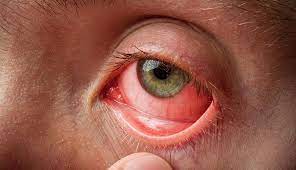
Rise in Eye Flu Cases: Over 8,800 Cases Reported in Kashmir in the Last 2 Weeks
Conjunctivitis cases have increased in Kashmir as more than 8829 confirmed cases of the ‘Eye Flu’ have been reported from different parts of the Valley during the past two weeks.
According to official information from the Directorate of Health Services Kashmir (DHSK), 8829 cases of conjunctivitis, commonly known as the “eye flu” have been recorded from different areas of Kashmir during the past two weeks.
Anantnag has reported the most infection cases – 1565, followed by Baramulla with 1415, Srinagar 1104, Pulwama 1439, Budgam 1004, Shopian 821, Kupwara 567, Kulgam 436, Ganderbal 440, and Bandipora 38.
DHSK spokesman Dr Mushtaq Ahmad said that for halting the spread of the infection, people should keep their distance from those who are infectious.
According to the doctors, Conjunctivitis, commonly referred to as “eye flu” is a common eye illness in India and other countries.
A thin, translucent membrane that covers the white of the eye and the inside of the eyelids, the conjunctiva, is affected.
Eye virus is extremely infectious and spreads quickly, especially in crowded settings. Recently, the DHSK issued an advisory to control the spread of the condition.
The advisory called for maintaining optimal hygiene and emphasised frequent hand washing with soap and water for at least 20 seconds, particularly after touching the face or contaminated surfaces.
“In situations where soap and water aren’t available, opt for hand sanitiser containing at least 60 percent alcohol. Avoid touching the eyes to prevent germ transfer. Steer clear of infected individuals, as conjunctivitis is highly contagious. Refrain from sharing personal items and ensure surfaces prone to virus contact are regularly disinfected. Consider wearing eye protection when in close proximity to infected individuals. Employ respiratory etiquette by covering the mouth and nose when coughing or sneezing, and dispose of tissues properly. Prevent eye rubbing to curb virus spread. Stay home if infected and seek guidance from a healthcare professional before resuming activities. Adhere to contact lens guidelines, replace lenses and cases regularly, and maintain cleanliness in shared environments. Lastly, avoid swimming pools to prevent further transmission,” the advisory stated.

